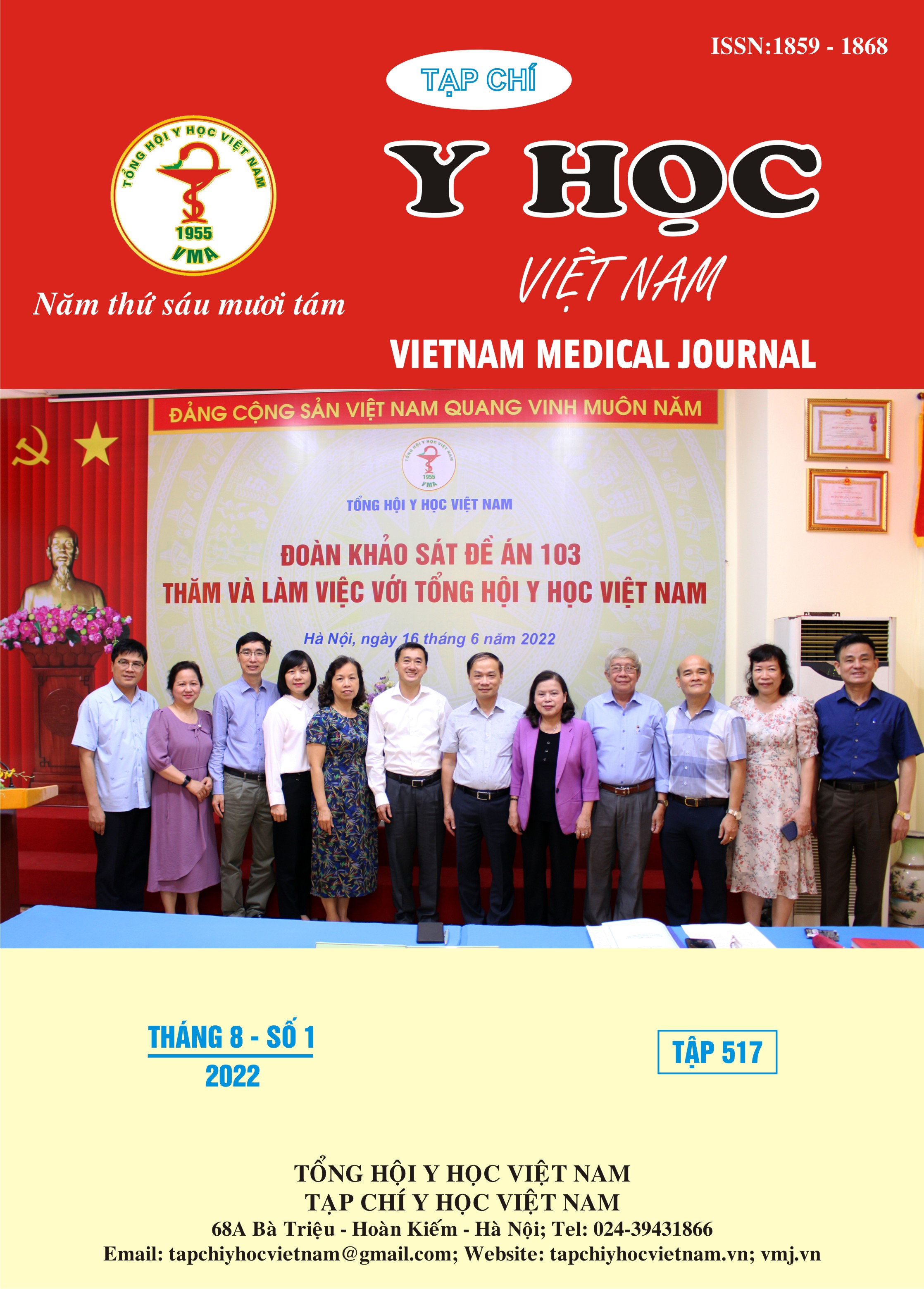NGHIÊN CỨU ĐẶC ĐIỂM KHÁNG KHÁNG SINH CỦA CÁC CHỦNG VI KHUẨN GRAM DƯƠNG GÂY NHIỄM KHUẨN ĐƯỜNG TIẾT NIỆU PHÂN LẬP ĐƯỢC TẠI BỆNH VIỆN HỮU NGHỊ ĐA KHOA NGHỆ AN (1/2021 – 12/2021)
Nội dung chính của bài viết
Tóm tắt
Đặt vấn đề: Nhiễm khuẩn đường tiết niệu (NKĐTN) là bệnh lý thường gặp. Nhiễm khuẩn tiết niệu có thể tái diễn nhiều lần nếu không được chẩn đoán sớm và điều trị hiệu quả. Các vi khuẩn Gram dương là những căn nguyên gây bệnh quan trọng. Đối tượngphương pháp nghiên cứu: Các chủng vi khuẩn Gram dương gây nhiễm khuẩn đương tiết niệu phân lập được tại bệnh viện Hữu nghị Đa khoa Nghệ An từ 1/2021 đến 12/2021. Thiết kế nghiên cứu: Cắt ngang mô tả. Kết quả: Phân lập được 91 chủng vi khuẩn Gram dương gây NKĐTN, trong đó, Enterococcus faecium chiếm tỷ lệ cao nhất (40,7%), xếp thứ 2 là Enterococcus faecalis 33,0%. Staphylococcus aureus, Streptococcus agalactiae chiến tỷ lệ thấp trong các tác nhân gây bệnh phân lập được. Enterococcus faecium kháng đến 100% với nhiều kháng sinh Ampicillin, Penicillin, Ciprofloxacin, Levofloxacin, kháng vancomycin 13,9%, chưa ghi nhận kháng Linezolid. Enterococcus faecalis đề kháng với nhóm Quinolones 63,3%, với Linezolid 3,6%, chưa ghi nhận đề kháng Vancomycin. Kết luận: Các vi khuẩn Enterococcus faecalis, Enterococcus faecium là những tác nhân Gram dương thường gặp nhất. Các vi khuẩn phân lập được đã đề kháng với nhiều kháng sinh thường dùng với các mức độ khác nhau. Xuất hiện Enterococcus faecalis kháng linezolid (3,6%), Enterococcus faecium kháng vancomycin (13,9%).
Chi tiết bài viết
Từ khóa
Nhiễm khuẩn tiết niệu, Enterococcus faecalis, Enterococcus faecium, Enterococcus spp
Tài liệu tham khảo
2. Trần Thị Thanh Nga (2015), "Tác nhân gây nhiễm trùng tiểu và tình hình đề kháng kháng sinh tại bệnh viện Chợ Rẫy 2013", Tạp chí y học thành phố Hồ Chí Minh. 18(4).
3. Nguyễn Thị Thanh Tâm và Trần Thị Bích Hương (2015), "Đặc điểm lâm sàng và vi trùng học của nhiễm khuẩn đường tiết niệu phức tạp ở người trưởng thành tại bệnh viện Chợ Rẫy", Y học TP Hồ Chí Minh. 19(4), tr. 8.
4. Trần Thị Thủy Trinh và Bùi Mạnh Côn (2016), "Đề kháng kháng sinh của các tác nhân gây nhiễm khuẩn đường tiết niệu tại bệnh viện An Bình năm 2015", Y học TP Hồ Chí Minh. 20(5), tr. 6.
5. Márió Gajdács và các cộng sự. (2020), "Increasing relevance of Gram-positive cocci in urinary tract infections: a 10-year analysis of their prevalence and resistance trends", Scientific Reports. 10(1), tr. 1-11.
6. Kiều Chí Thành và các cộng sự. (2017), "Nghiên cứu tỷ lệ và tính kháng kháng sinh của các vi khuẩn gây nhiễm khuẩn tiết niệu tại Bệnh viện Quân Y 103 (2014 - 2016)", Thời sự y học. 12/2017(12/2017), tr. 6.
7. PA Wayne (2019), Clinical and Laboratory Standards Institute: Performance standards for antimicrobial susceptibility testing: 29th informational supplement. CLSI document M100-S29. 2019, chủ biên.
8. Kaleem Ullah Zubair và các cộng sự. (2019), "Frequency of urinary tract infection and antibiotic sensitivity of uropathogens in patients with diabetes", Pakistan journal of medical sciences. 35(6), tr. 1664.


